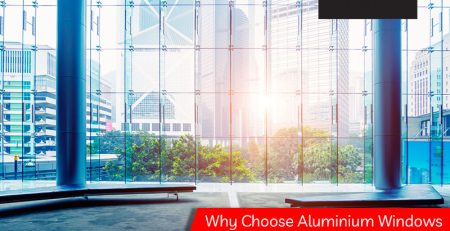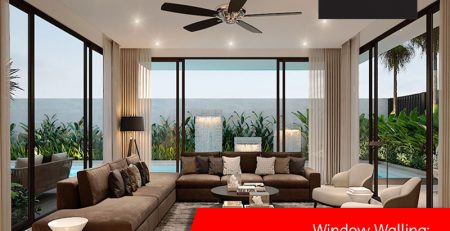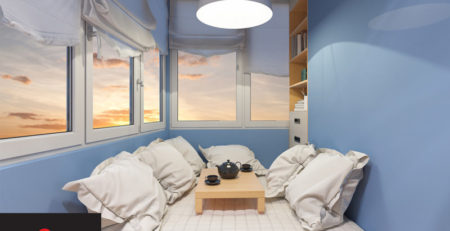Seeing Is Believing – Choosing The Right Glazing For Your Home
South Africa is traditionally a sunny, hot country, and our homes are designed with this in mind. We have large rooms, high ceilings, and big windows to take advantage of all the sun, and not a lot of carpeting on our floors. Of course, now that we’re in the grips of winter, we’re wondering why we don’t also design our homes to take cold nights and cooler days into account! This is one of the reasons why it’s so important to choose the right glazing for the windows in your home. Although most heat loss occurs through the walls, ceilings and floors, around 10% is lost through doors and windows. So choosing the right glazing is a great way to reduce your energy bills and keep your home warmer (and quieter) in winter. What’s not to love?
The secret is knowing which glazing to choose. What type is right for your home – and the windows in your home? Not all windows are created equal, and some are not as suited to double- or even triple-glazing as others.
Double Glazing
Double glazing is when windows have two sheets of glass and not one. In between these sheets is a gap – usually of around 16mm – and it is in this tiny space that the magic happens. The gap between the sheets of glass forms an insulating barrier that slows down the rate at which heat escapes through your windows. Triple glazing works off the same principle, except there are three sheets of glass, and therefore two gaps, meaning you get twice as much insulation as with double glazing.
So, it sounds like a no brainer, but not all windows are suited to double glazing. The opening style of the window, as well as the frame material, need to be taken into account. It is often much easier to replace the entire window and frame than to try and retro-fit double glazing into an existing window.
Remember that new windows with double-glazing will be more airtight than your previous windows. It’s therefore very important to ensure your house has good ventilation to let moisture out and fresh air in.
The great thing about double-glazing is that it helps keeps your home warmer in winter, by reducing heat loss from the inside, and cooler in summer, by reducing heat gain from the outside. It’s clever stuff! But while increased energy efficiency and greater comfort are two huge benefits double glazing has over single, there are certain factors to consider before changing your glazing:
- How big are your windows, where are they placed in your house, and what direction do they face?
- What are the climactic conditions of the area in which you live? Is it generally warm, or cool, for example? Does it get a lot of rain? Is your house exposed to the wind?
- What are the thermal properties of the types of glazing you’re looking at?
Once you’ve got the answers to these questions, you’re ready to look at double- or triple-glazing in more detail.
What Types Of Windows Are Best For Double Glazing?
Casement windows are generally the most popular double-glazing window style. The reasons for this are not hard to see. Casement windows are practical, modern, stylish and secure, and they’re usually available in a huge range of designs and colours.
It’s easy to spot casement windows. They have a clean, simple style that sets them apart from many other window styles. One of the best things about them is the way they open. Unlike hung windows or sliders, casements hinge at at the side and open outwards – just like a car door. The actual opening area on a casement window is large, allowing for maximum possible light and ventilation. They can be glazed with a variety of options, ranging from normal, single pane glass to triple-glazed, thermally-efficient panes that have inert gas between the sheets of glass to add to its insulation properties.
Flexible and versatile, the Origin casement window can be designed and manufactured for virtually any environment and in any configuration. Our top hung casement aluminium window has passed the strict AAAMSA wind, deflection and water tests required for its A3 rating, while our side hung window is A1 rated. All our casement windows can be double glazed, either with regular Sealed Insulated Safety Glass, or Sealed Insulated Safety Glass with Low-E on one side for Energy Efficiency.
What Is Low E Glass?
Low emissivity (or Low-E glass) is a type of energy-efficient glass with an incredibly thin (thinner than a human hair) transparent coating. It’s designed to prevent heat escaping through your windows to the cold outdoors in winter. In many cases, heat loss can be reduced by up to 75%! Imagine what that could do to your heating bill! In the summer, it reflects heat away from the interior of your home, reducing the demand on airconditioners.
Tell Me About Reflective Film
Reflective, or mirror film, is an effective way to not only ensure privacy, but to also increase the reflective properties of your glass. It’s also possible to install coloured reflective film, which is both functional and aesthetically pleasing.
Contact us today to find out more about how we can help you choose the right windows, and the right glazing, for your home.





